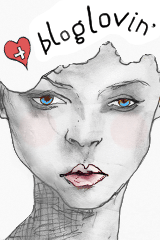A common misconception is that the magic of a well captured shot is the result of some magic which occurs within the body of the camera. However the real magic component is light. It is possible to poorly capture a well lit subject, but a poorly lit subject will always be lacking when it comes to the final image. I am a real Newbie to all this and I have struggled for a while now to master the 'exposure triangle' while using my first DSLR camera. It's an ongoing battle and it definitely takes time getting used to the measurements and the way in which the varying factors interact to produce an image.
There are all kinds of courses devoted to this subject so consider this as a brief overview and introduction to the concept of capturing light well.
When you take a photograph, the camera's shutter opens up and begins to allow light to pass through the lens. It is this light which then hits the camera sensor which is then processed as the image. There are three factors which affect how the light is captured and therefore what the final image will look like.
Aperture: This refers to how big the lens opening is and it is measured in f-stops (f/2, f/5, f/11 etc). The smaller the number is, means the wider the aperture and when the aperture is wider it allows more light to pass through. Aperture size can also affect the depth of field of an image, which is a great tool for many reasons such as blurring the background for a portrait for instance.
Shutter Speed: This refers to the length of time that the shutter is left open, it is measured in seconds (1/200 of a second, 1/60, 5 seconds and so on). The slower the shutter speed, the longer it remains open thus allowing for more light to come in. Shutter speeds also affects the level of sensitivity to motion. Meaning that while faster shutter speeds can freeze motion, using a slower shutter speed can help to produce motion blur, which can be a useful technique also. Sometimes the photographer wishes to portray the motion or movement of the subject to varying degrees. You can find some useful tips on shutter speed here.
ISO: This refers to the level of sensitivity of the sensor to light and it is measured in ISO units (100 ISO, 400 ISO, 6400 ISO and so forth. The higher the ISO the more flexibility you have in being able to take photographs in darker coditions. However, there is a cost and is noise or the graininess of an image. This is why photos taken in darker conditions can often exhibit such characteristics, check here for more information on how to master ISO.
*Post written by Michael David. Photo via Pexels.
FOLLOW GIRLGONEDREAMER:
Twitter | Facebook | Bloglovin' | Instagram
Subscribe to GirlGone Dreamer by Email
Twitter | Facebook | Bloglovin' | Instagram
Subscribe to GirlGone Dreamer by Email



No comments :
Post a Comment
Note: only a member of this blog may post a comment.